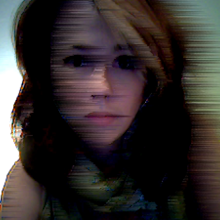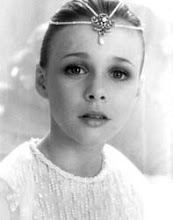We are at the end of Baroque week here at New World Symphony. It's been such a learning experience trying to capture all the essences and nuances of period-style performance. No vibrato, lots of bow speed, and new ideas of phrasing and meter are all issues that have been addressed this week. We have also learned about the égal/inégal practice of eighth-note articulation in Baroque French music. The conductor this week, Ton Koopman, is basically a Jesus figure in the performance-practice world. He is very enthusiastic and energetic, and I have really enjoyed working with him. At first it was frustrating because it seemed like he stopped every three bars or so to rehearse, but it was all for the sake of perfection! His knowledge of the style is infinitely more superior than most musicians I have performed with. The program consisted of a Suite from Dardanus, an opera by Jean-Phillipe Rameau; two Symphonies by Carl Phillip Emanuel Bach, and the well-known Suite No. 3 in D major by Johann Sebastian Bach (It has the famous "Air" that is played at basically every wedding ever, and a Gavotte made famous by Suzuki pedagogy).
So far we have had two performances of the program, and one more to go. The reviewer (hated by all of the musicians here) stated that Koopman's interpretation of the Rameau was "bluff" and "Germanic" after the first performance. Tonight (the second performance) Koopman took a microphone and defended his view of the piece, citing Rameau's musical influences at the time of its writing. Go Koopman! This piece also included the French égal/inégal technique which I mentioned. In layman's terms, we basically "jazzed up" the eighth notes at specific points in the Rameau. We made the eighth notes "swing" in a bluesy style. A cohesive argument for the style is here; scroll down to the very last small paragraph to get an idea of the argument if you want a quick version!
Tomorrow I am going to see The Other Boleyn Girl. I have recently finished the book, and I think the movie will stray a lot from it (although the general plotline is the same - Anne Boleyn becomes the second Queen of England, ushering in the Reformation and also getting her head chopped off). The point of the book is to highlight "the other Boleyn girl", Mary Boleyn, who was the mistress of King Henry VII before her sister Anne stepped in. Mary is played by my favorite actress, Scarlett Johanssen, and I can't wait to see it merely for that fact. ScarJo can do no wrong in my eyes! I have read some reviews though, and it seems as though the Anne Boleyn (played by Natalie Portman) plotline takes over. I love NatPo, but come on...the book is about Mary! The author, Philippa Gregory, stated that she was intrigued by Mary's character because really the only trace of her is the fact that King Henry christened a boat in her honor, the Mary Boleyn. Otherwise neither girls were listed in the Boleyn family records; girls were simply too unimportant to be recorded at birth. Of course we know of Anne because she made history (in more ways than one!), but Gregory's narrative standpoint as Mary was intriguing and awesome.
Read/see the book/movie! Or both!
Saturday, March 1, 2008
Subscribe to:
Comments (Atom)

